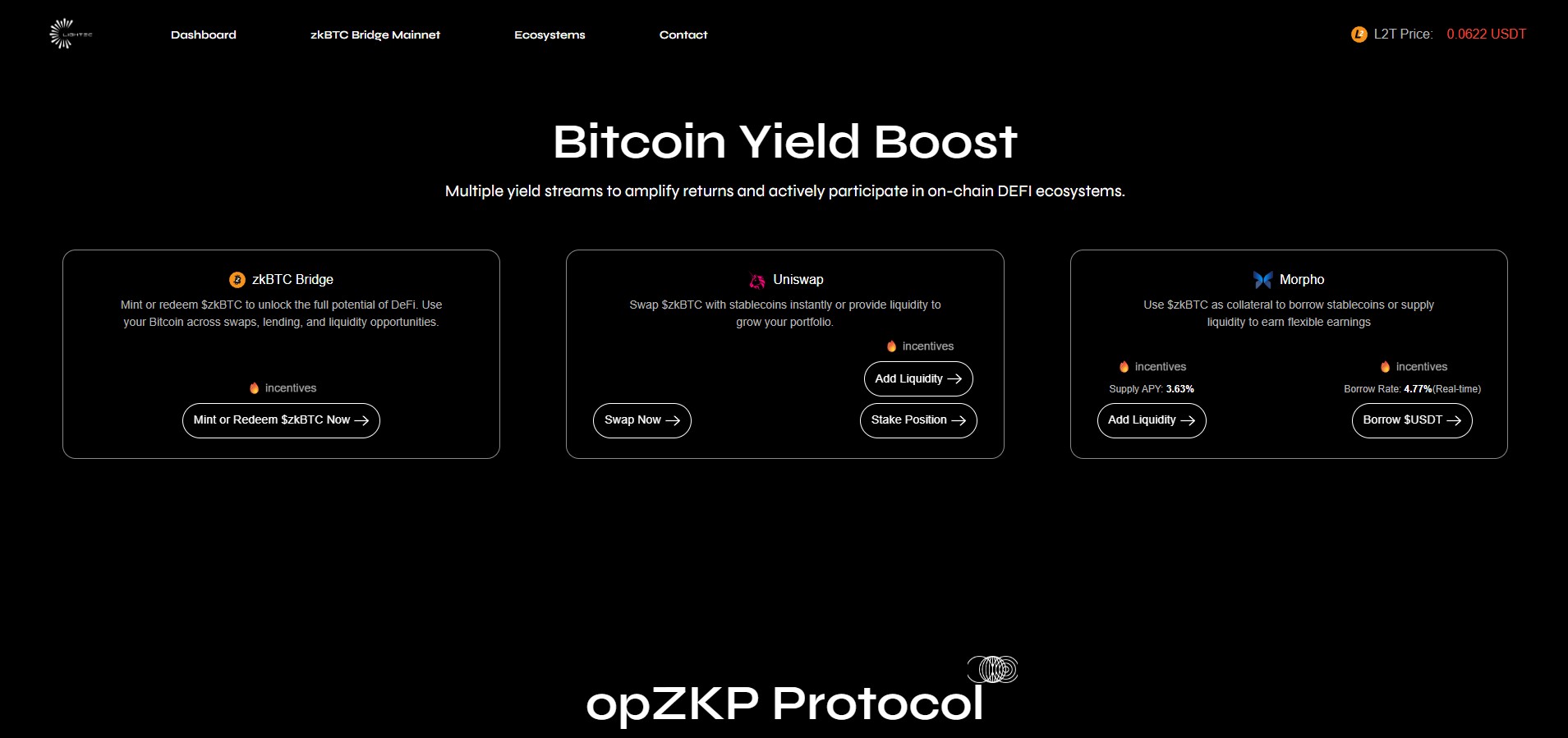
Bitcoin is undeniably the biggest blockchain network in the crypto industry. Created to take power away from centralized bodies and give it to each user, the Bitcoin network facilitates peer-to-peer money transfer, winning the hearts of retail and institutional investors alike. Still, the leading blockchain network falls behind in terms of innovation within the broader crypto ecosystem.
Table of Contents
Following the launch of blockchains like Ethereum, crypto projects could deploy products powered by smart contracts. For context, these are lines of code on a blockchain that automatically execute when specific conditions are met. With this innovation, the crypto market has seen the development of decentralized finance (DeFi) projects that offer better ways for investors to engage with crypto and maximize their earning potential.
While Bitcoin does not natively support DeFi integration, various blockchain programmers have found a way to make it possible. That is where the zkBTC Bridge comes into play. This crypto project aims to blur the boundaries between Bitcoin and Ethereum by bringing smart contracts into the picture. This article explains everything there is to know about the zkBTC Bridge.
What is the zkBTC Bridge?
zkBTC is a layer-2 scaling solution built atop the Bitcoin network. Powered by zero-knowledge proof (ZKP) technology, the project allows users to interact with the Ethereum ecosystem and earn additional yield.
To make this possible, users deposit their BTC holdings into a Bitcoin address powered by ZKP technology to mint $ZKBTC, an ERC-20 token pegged 1:1 to bitcoin’s value. The reverse process is used when one wants to redeem their BTC stash. Aside from actively participating in Ethereum-based crypto projects, users can retain exposure to the apex cryptocurrency. They also earn the project’s reward token, $L2T, which is also earnable when users pay fees.
While zkBTC establishes the bridge between Bitcoin and Ethereum, its developer is interested in bringing more utility to Bitcoin. This is possible through opZKP, zkBTC’s sister project. Note that both projects were developed by Lightec Labs in 2023.
How Does opZKP Work?
opZKP is a project that taps UTXO (unspent transaction output) to enable Bitcoin to perform complex actions and serve as a base layer for decentralized apps (dApps). It achieves this through its underlying zero-knowledge proof (ZKP) architecture. For context, ZKP is a cryptographic method that one party (the Prover) uses to prove to another party (the Verifier) that a statement/data is accurate without revealing details about it. This ensures on-chain privacy and security.
How does opZKP make Bitcoin more sophisticated? Bitcoin currently uses Stack, a stack-based programming language, to facilitate its entire operations, such as sending digital assets between users and checking signatures. Bitcoin Script can only perform simple tasks compared to smart contracts-enabled blockchains like Ethereum.
Instead of running a complex program on Bitcoin, opZKP allows developers to launch it off-chain, create a proof of the program, and get Bitcoin to check if the ZK proof is valid. opZKP introduces a new opcode to the Bitcoin Script that verifies a program on the blockchain.
How do UTXOs come into the picture? UTXOs refer to a user’s bitcoin holdings in their custody, which haven’t been spent. In this context, opZKP seeks to use UTXOs to represent smart contracts, rollups, dApps, and other innovations. At the same time, the project is bringing in the idea that UTXOs can be spent only when proofs of off-chain data are valid.
Through this mechanism, Bitcoin retains its decentralization, security, and simplicity. At the same time, it potentially becomes more powerful and scalable, enabling it to execute complex computations on-chain like Ethereum and other smart contracts-enabled blockchains.
According to Lightec Labs’ litepaper, zk-rollups can emerge as layer-2 networks on Bitcoin, allowing Bitcoiners to partake in activities like complex smart contracts, trading stablecoins, and generating DeFi yield.
Why Choose the zkBTC Bridge?
Here are the key reasons why users choose the zkBTC Bridge:
DeFi access
Bitcoin does not inherently support DeFi integration, so Bitcoiners find it challenging to tap into this innovation. However, Lightec Labs’ zkBTC and opZKP make it easier to enjoy DeFi interaction while still retaining exposure to BTC. Anyone who uses the zkBTC Bridge positions themselves in line to benefit from dApp integration.
Yield maximization
The crypto market has evolved beyond just holding a crypto asset and hoping for a price pump to generate profit. With the introduction of smart contracts, anyone can boost their earning potential by investing in a decentralized project that offers more ways to increase yield.
zkBTC offers a share of the $L2T token to those who invest in its ecosystem. The reward token can also be exchanged for zkBTC and, by extension, BTC.
Exposure to Bitcoin
Lightec Labs’ zkBTC is structured to allow users to retain exposure to bitcoin since the digital asset is pegged 1:1 to the apex coin. Hence, if BTC soars 2x, you also benefit from the price pump.
opZKP makes things even more interesting; it harnesses zero-knowledge proofs to make the Bitcoin network more scalable. With this infrastructure, blockchain developers and users do not have to leave Bitcoin for other blockchains. This is because they have all they need to launch a dApp on Bitcoin or invest in one.
Who is Behind the Project?
As mentioned earlier, Lightec Labs founded zkBTC and opZKP. Lightec’s founder and CEO is Weiji Guo, a cryptographic engineer who has been a software engineer for over two decades and has around 10 years of experience in cryptography engineering.
He wrote EIP-6051, an Ethereum improvement proposal titled “Private Key Encapsulation.” He also co-authored EIP-5630 titled “Encryption and Decryption.” In April 2023, he proposed a new opcode, OP_ZKP, to the Bitcoin community. Since then, he has actively supported the development of his brainchild, zkBTC.
Conclusion
So far, Bitcoin has outperformed every other blockchain in various metrics, such as market capitalization and price movement. It also boasts the most considerable support from retailers and institutions. To bring more innovations into the layer-1 network, Lightec Labs introduced zkBTC and opZKP. This article discussed how these projects work. Join the ecosystem if you believe that zkBTC can define the future of Bitcoin innovation.





 usdt
usdt bnb
bnb

